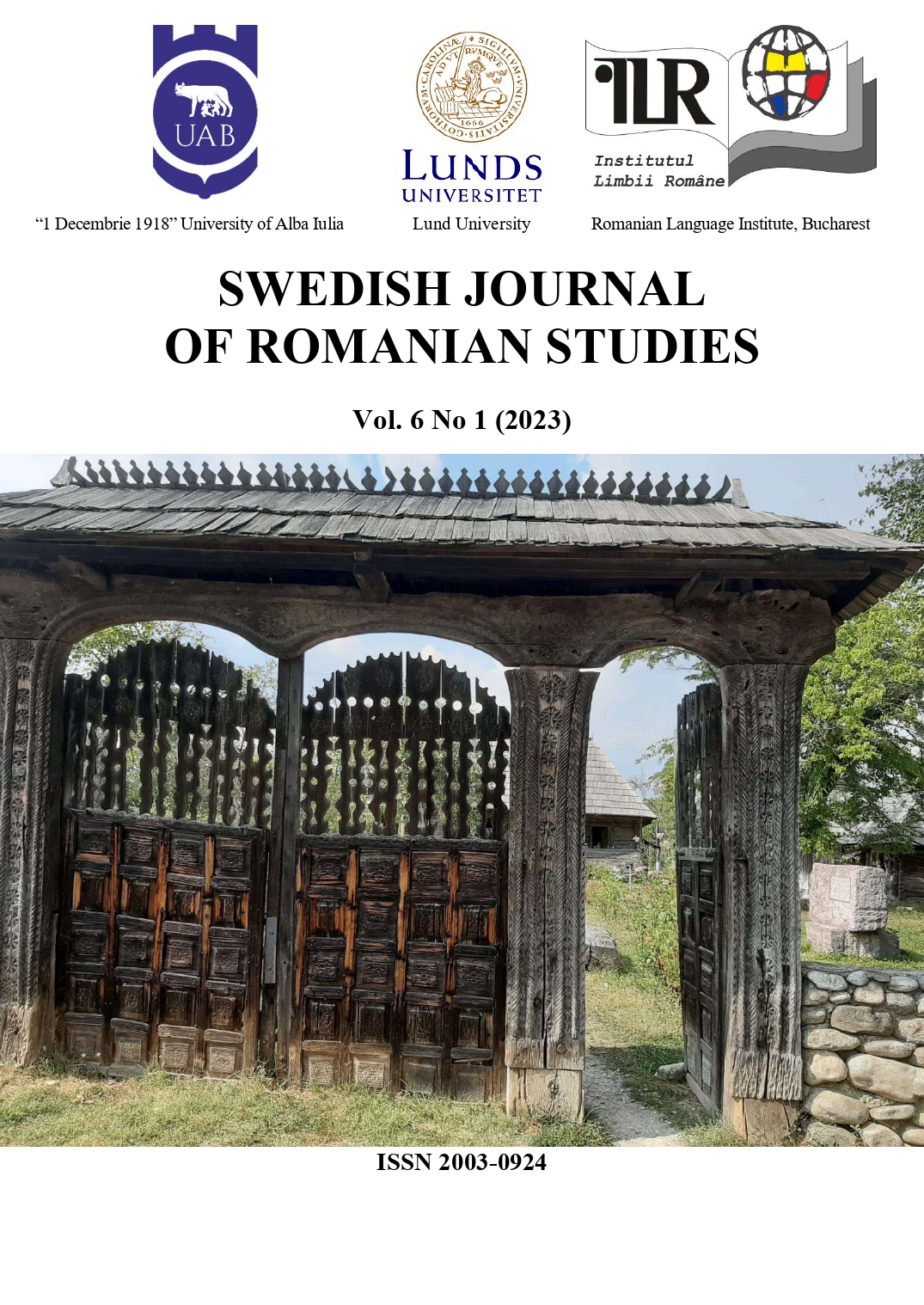Imperativele Predaniei în câteva reprezentări iconografice ale Sfântului evanghelist Ioan cu ucenicul său, Prohor
The imperative of “Predania” in some iconographic representations of Saint John the Evangelist with his disciple, Prochorus
DOI:
https://doi.org/10.35824/sjrs.v6i1.25172Keywords:
predania, transmission, continuity, divine revelation, master-disciple relationship, teaching, Saint John the Evangelist, Prochorus, disciple of Saint John the TheologianAbstract
The Judeo-Christian culture is par excellence a logocentric culture, derived from the Word of the Creator and from the founding narrative, which, being fundamental elements for shaping this culture, is however transmitted in writing. From the Tablets of the Law, where the Decalogue is written by the finger of God himself, to the Pentateuch dictated to Moses (the Torah), or the Gospels instilled into the four apostles under the inspiration of the Holy Spirit, an entire sacred history unfolds under the sign of revelation and, implicitly, of the imperative to transmit the revealed truths, i.e. the “predanie”.
Starting from this observation, our study aims to focus on, and analyse, some of the symbols that are recurrently exploited to suggest the idea of revelation received and transmitted instantaneously, starting from the representation of St. John the Evangelist dictating the Gospel (or The Book of the Revelation or the Apocalypse) to his disciple Prochorus.
References
Bedros, V. (2019), Simbol sau indice? Despre polisemia culorii în imaginea de tradiție bizantină/ On the Colour’s polysemy in the Image of Byzantine Tradition. În Analele științifice ale Universității "Al.I. Cuza" din Iași (Serie nouă), Secțiunea Istorie, Tom LXV/ 2019, Iaşi: Editura Universităţii „Alexandru Ioan Cuza” (pp.103-119).
Bianu, I., Nerva Hodoș, N. (1903). Bibliografia românească veche Tomul I, 1508-1716/ Old Romanian Bibliography Volume I, 1508-1716, București: Edițiunea Academiei Române.
Biblia sau Dumnezeiasca Scriptură/ The Bible or The Holy Scriptures (2001). București: Editura Institutului Biblic și de Misiune al Bisericii Ortodoxe Române (trad. Bartolomeu Anania).
Cantacuzino, C. (1996). Istoria Țării Românești, Cronicari munteni/ History of the Wallachia. Chroniclers of Muntenia. București: Minerva.
Costin, M. (1965). Opere II/ Works Vol. II. București: Editura pentru literatură.
Costin, N. (1989). Letopisețul Țării Moldovei de la zidirea lumii până la 1601 și de la 1709 la 1711/ The Chronicle of Moldavia from the Creation of the World until 1601 and from 1709 to 1711, Iași: Junimea.
Cotsonis, J. (1989). On some illustrations in the Lectionary, Athos, Dionysiou 587. În Byzantion, Revue Interantionale des Etudes Byzantines, Tome LIX/ 1989, Leuven: Peeters Publishers (pp. 5-19).
Dionisie din Furna (2000). Erminia picturii bizantine/ Byzantine Herminia (The painter’s Manual. București: Editura Sofia.
Klibansky, R. Panofsky, E., Saxl, (2002). F. Saturn și melancolia. Studii de filosofie a naturii, religie și artă/ Saturn and Melancholy. Studies in Philosophy of nature, religion and art,, Trad. M. Tătaru-Cazaban, B. Tătaru-Cazaban, A. Văetiși. (Ed. originală 1964).
Lazăr Zăvăleanu, L. (2013), O lume într-un text. Predosloviile în literatura română veche/ A world in a Text. Prefaces in Ancient Romanian Literature,, București: Editura Muzeului Național al Literaturii Române.
Lazăr, L. (2020). Imaginarul religios în literatura română/ The Religious Imaginary in Romanian Literature. În Corin Braga (cord.) Enciclopedia imaginariilor din Romania. Vol. I: Imaginar literar/ The Encyclopedia of Romania’s Imaginary. Vol. I. Literary Imaginary. Iași: Polirom (46-77).
Masuda, T. (2006). Liturgical Illustrations in the Byzantine Lectionary Cod.587 in the Dionysiou Monastery, Mount Athos. În Orient, Vol. XLI/ 2006 (pp.91-108).
Morărescu, D. (1982). Un xilograf moldo-vlah : Damaschin Gherbest stemarul/ A Moldavian-Vlah xylographer, Damaschin Gherbest the heraldist. În Arta, XXIX, nr.7-8/ 1982.
Moxa, M. (1989). Cronica universală/ Universal Chronicle. București: Minerva.
Olteanu, P. (1992). Floarea darurilor sau Fiore di virtù/ Flower of gifts or Fiore di virtù. Timișoara: Editura Mitropoliei Banatului,
Pastoureau, M. (2017). Vert. Histoire d’une couleur/ Green, the Story of a colour, Paris: Editions du Seuil.
Poptămaș (Kömives), C.-P. (2022) Metamorfoza unei miniaturi pictate, în tehnica mozaic – Icoana Sfântul Ioan Evanghelistul și ucenicul Prohor/ The metamorphosis of a painted miniature, in the mosaic technique – Icon of Saint John the Evangelist and the disciple Prohor, Lucrare de licență nepublicată, Universitatea „1 decembrie 1918” din Alba Iulia
Quenot, M. (1993). Icoana, fereastră spre absolut/ The Icon, a Window to the Absolute. (Trad.V. Răducă). București: Editura Enciclopedică (Ed. originală 1987).
Sfânta și Dumnezeiasca Evanghelie/ The Holy and Divine Gospel (1991). București: Editura Institutului Biblic și de Misiune al Bisericii Ortodoxe.
Tatay, A.E., Tatai-Baltă, C. (2015). Xilogravura din cartea românească veche tipărită la București (1582-1830)/ Wood Engraving of an Early Romanian Book Printed in Bucharest (1582-1830). Cluj-Napoca: Editura Mega.
Tugearu, L. (1996). Miniatura și ornamentul manuscriselor din colecția de artă medievală românească, Vol I, Manuscrise bizantine și grecești medievale/ Miniature and Ornament of Manuscripts from the Romanian Medieval Art Collection, Vol I, Late Medieval Byzantine and Greek Manuscripts, București: Muzeul Național de Artă al României.
Downloads
Published
How to Cite
Issue
Section
License
Copyright (c) 2023 Laura Zăvăleanu

This work is licensed under a Creative Commons Attribution-NonCommercial 4.0 International License.
Authors who publish with this journal agree to the following terms:
a. Authors retain copyright and grant the journal right of first publication with the work simultaneously licensed under a Creative Commons Attribution-NonCommercial 4.0 International License that allows others to share the work with an acknowledgement of the work's authorship and initial publication in this journal.
b. Authors are able to enter into separate, additional contractual arrangements for the non-exclusive distribution of the journal's published version of the work (e.g., post it to an institutional repository or publish it in a book), with an acknowledgement of its initial publication in this journal.
c. Authors are permitted and encouraged to post their work online (e.g., in institutional repositories or on their website) prior to and during the submission process, as it can lead to productive exchanges, as well as earlier and greater citation of published work (See The Effect of Open Access).

